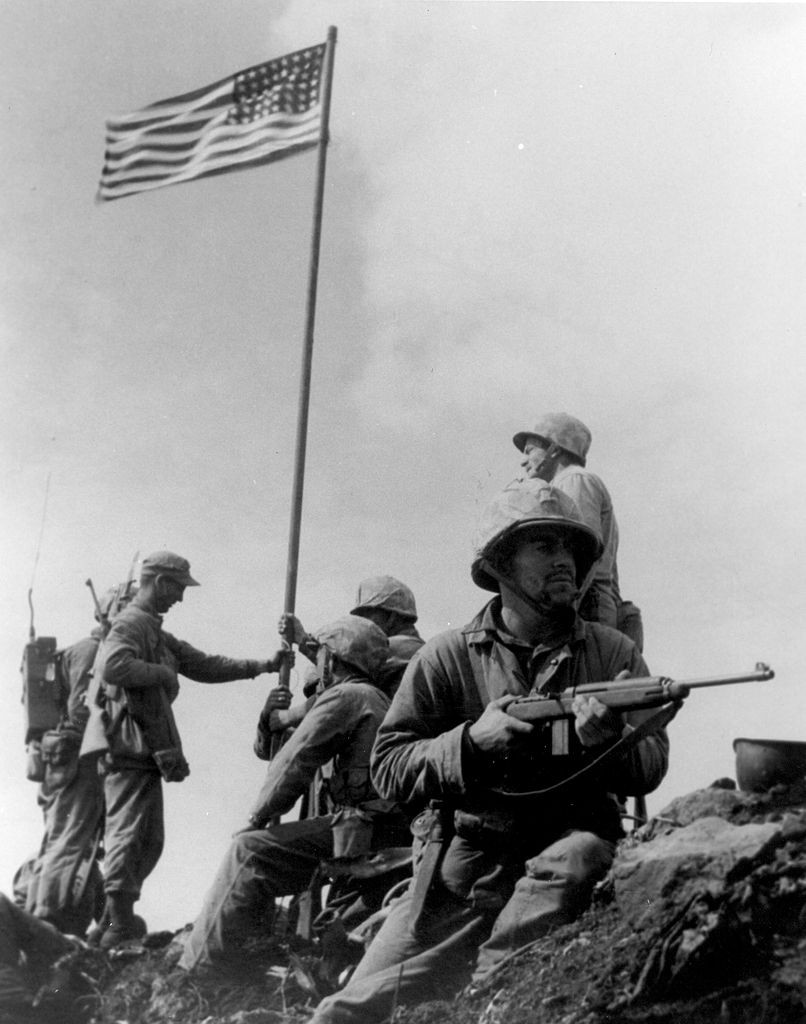Seventy years ago this month an invasion fleet loaded with U.S. Marines sailed towards the tiny Pacific island of Iwo Jima. The attack transport USS Missoula carried the men of the 28th Marines, including at least two Montanans, Louis Charles Charlo of Evaro Montana and PFC Donald Ruhl of Columbus, Montana. When the men of the 28th Regiment left the Missoula to board their landing craft, they took with them a small American flag that was destined to make history.
Louis Charlo was a member of the Salish tribe and a great-grandson of Chief Charlo. He enlisted in November 1943, one month after he turned 17, then trained at San Diego. He was serving as a BAR man with F Company on February 23, 1945 when he and three other men were sent to climb to the summit of 546-foot-high Mt. Suribachi.

Expecting certain death, they instead found no resistance. They slid back down and reported to Lt. Colonel Chandler Johnson what they had found. Lt. Harold Schrier and a platoon of Easy Company were sent back up the mountain, where several men found a 20-foot piece of pipe, to which they lashed the flag taken from the USS Missoula. As they raised it over the island, Louis R. Lowery of Leatherneck
Magazine snapped a photograph just before a Japanese grenade hit near him, breaking his camera, but leaving the film unhurt. According to the official Marine Corps account of this first flag-raising, Louis Charlo was one of the men in the photo, although others have disputed this. Decades after the flag-raising, another Marine claimed that it was he and not Charlo who was shown in the original photo, but there is little to substantiate his claim.

Since the small flag couldn’t be seen from afar, or perhaps because Lt. Colonel Johnson wanted to keep the flag for the 28th Marines, a second flag was raised over the island two hours later. The famous photo of this second flag-raising was flashed worldwide and won Associated Press photographer Joe Rosenthal a Pulitzer Prize. This image, the most famous photograph of World War II, became the logo for a three cent stamp (issued in June 1945), the logo for the
Seventh War Bond Drive, and as the inspiration for the Marine Corps War Memorial in Arlington, Virginia, dedicated in 1954.
A catholic priest held a mass after Mt. Suribachi was captured. A photo taken during the mass showed Louis Charlo in the group. It was the last known photo of the man from Evaro. Charlo was killed in action on March 2, 1945, and his remains were returned to Montana in 1948. After extremely heavy casualties on both sides, Iwo Jima was finally secured on March 17.


